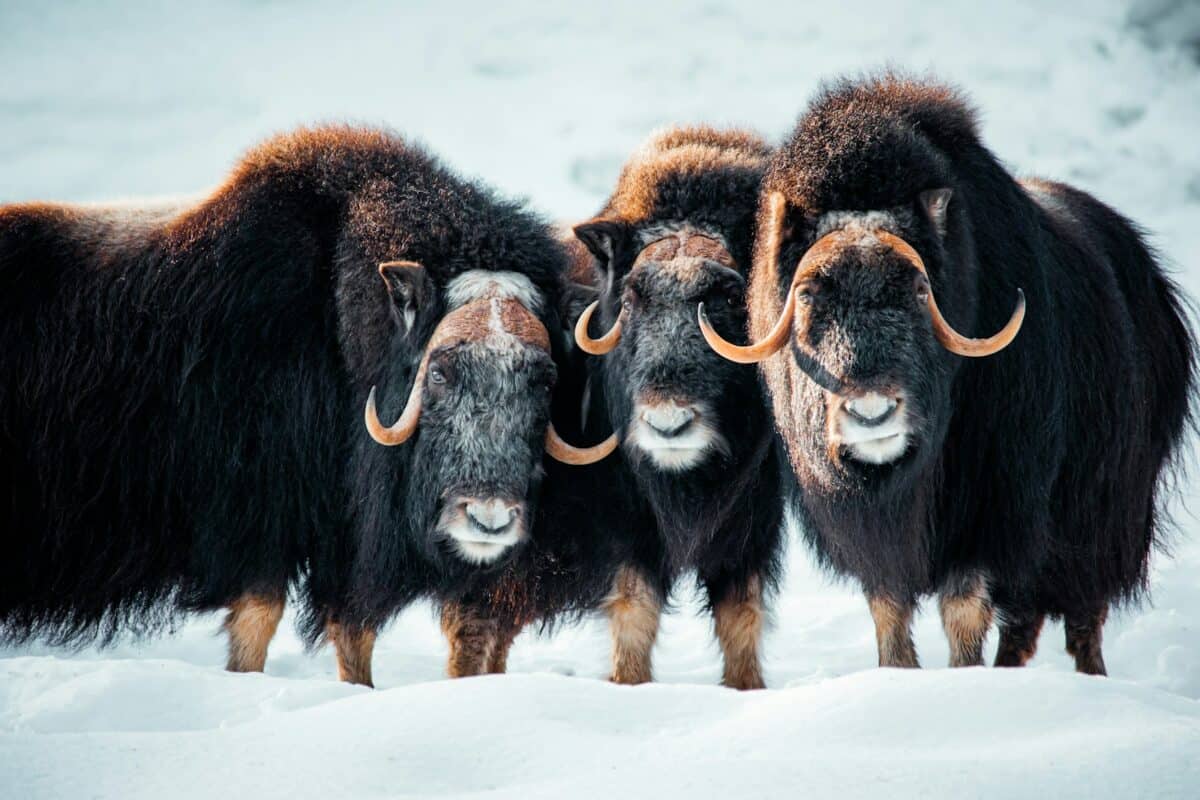In the harsh, unforgiving landscape of the Arctic, where temperatures regularly plummet to -40°F and below, survival depends on exceptional adaptations. Among the remarkable creatures that thrive in this extreme environment, one stands out for its extraordinary insulation capabilities. The Arctic muskox (Ovibos moschatus) possesses what scientists have confirmed to be the warmest natural coat in the entire animal kingdom. This magnificent mammal’s unique wool, called qiviut, provides insulation so effective that muskoxen rarely seek shelter even during the most brutal winter storms. Let’s explore the remarkable qualities of this superlative natural fiber and the fascinating creature that produces it.
The Remarkable Muskox: A Living Fossil
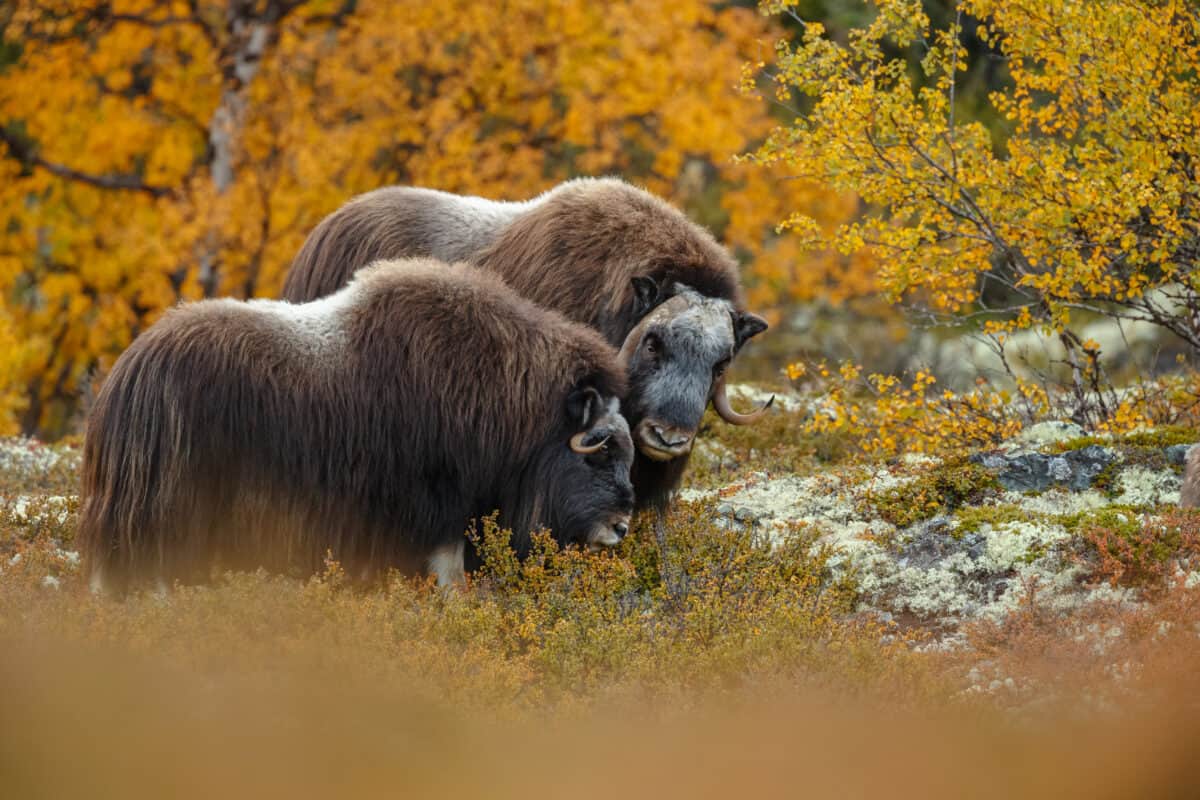
The muskox is one of the Arctic’s most ancient mammals, having survived the last Ice Age when many other megafauna species went extinct. With their massive bodies (adults weigh between 400-900 pounds), distinctive curved horns, and shaggy coats, these prehistoric-looking creatures have changed little over thousands of years. Fossil records show that muskoxen once ranged across the northern hemisphere, from Greenland across the Arctic regions of North America and northern Eurasia.
Despite their name, muskoxen are more closely related to goats and sheep than to oxen or cattle. They belong to the subfamily Caprinae, which includes mountain goats and chamois. Their scientific name, Ovibos moschatus, reflects this dual nature – “Ovi” refers to sheep, “bos” to cattle, and “moschatus” refers to their musky odor during mating season. These living fossils have survived in one of Earth’s most demanding environments largely thanks to their extraordinary coat.
Understanding Qiviut: Nature’s Ultimate Insulation
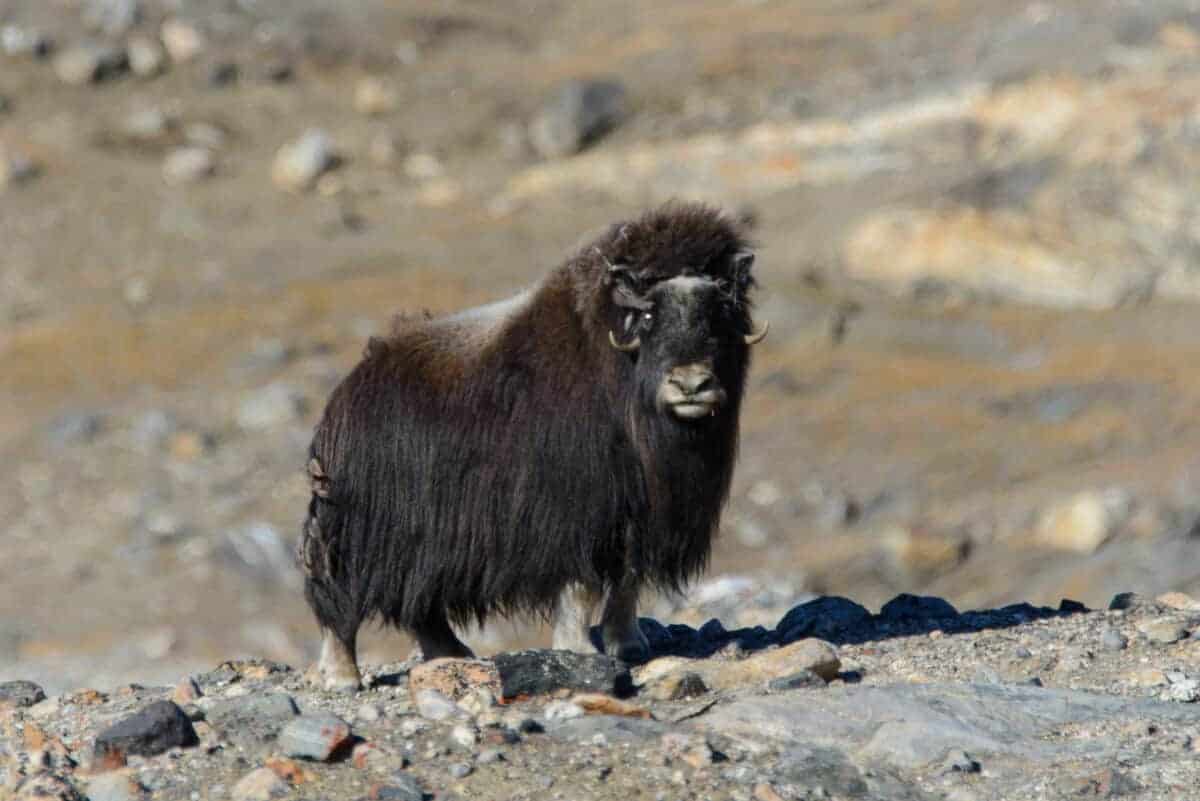
The muskox’s undercoat, known as qiviut (pronounced “kiv-ee-ute”), is widely recognized as the warmest natural fiber in the world, outperforming even the finest sheep’s wool and cashmere. This remarkable material consists of superfine fibers measuring just 15-18 microns in diameter (human hair averages 70-100 microns). These ultrafine fibers create millions of tiny air pockets that trap body heat with astonishing efficiency. Research has shown that qiviut provides approximately eight times more insulation than sheep’s wool by weight.
What makes qiviut truly exceptional is its unique structure. Each fiber has a hollow core, similar to polar bear fur, which enhances its insulating properties while keeping the material lightweight. Additionally, qiviut fibers have microscopic scales that interlock, creating a dense barrier against cold and wind. This natural engineering allows muskoxen to maintain their body temperature with minimal energy expenditure, even when ambient temperatures fall to -70°F with wind chill factors.
The Science Behind the Warmest Coat
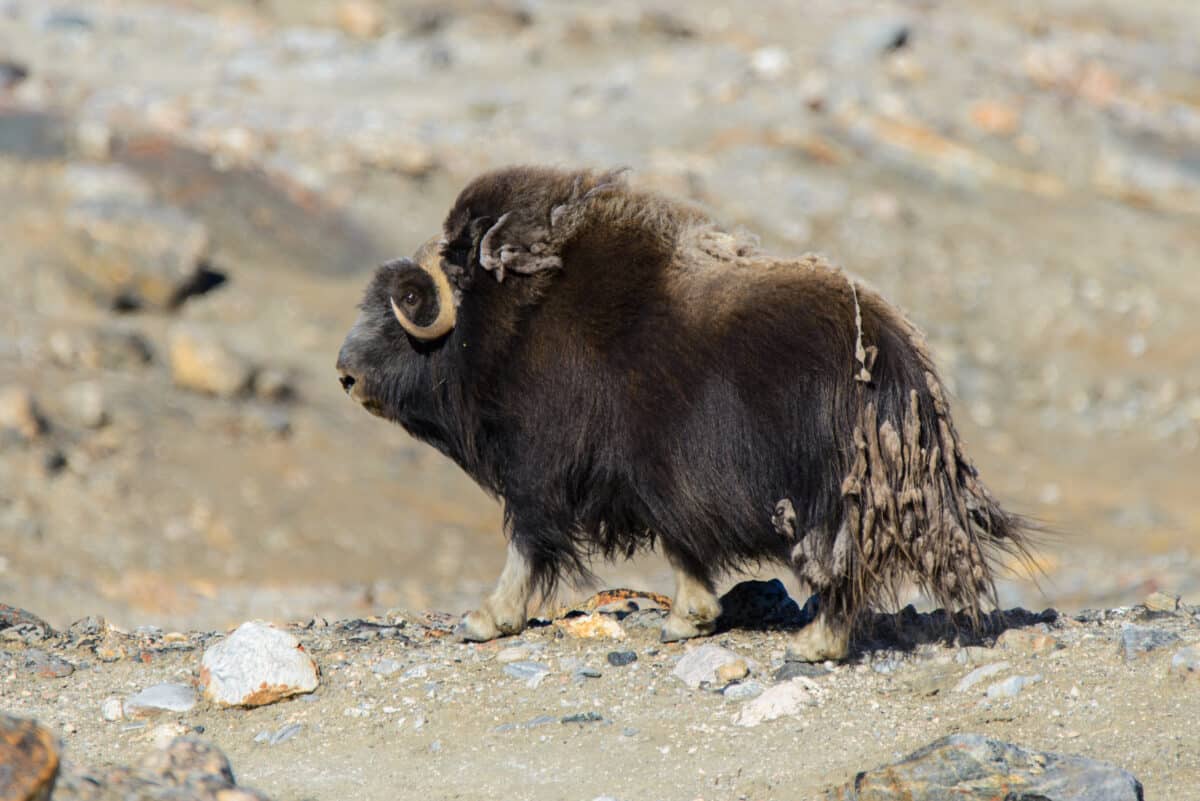
Scientific studies have confirmed the extraordinary thermal properties of the muskox coat. Researchers at the University of Alaska Fairbanks measured the insulative value of various animal fibers and found that qiviut outperformed all others in thermal efficiency. The R-value (a measure of thermal resistance) of qiviut is remarkably high compared to other natural fibers. This exceptional insulation is crucial for survival in the Arctic, where conserving body heat means conserving energy—and ultimately, survival.
The muskox’s coat actually consists of two distinct layers working in concert. The outer guard hairs are long (up to 24 inches), coarse, and water-resistant, providing protection from moisture and wind. These guard hairs hang almost to the ground, giving muskoxen their distinctive shaggy appearance. Beneath this protective layer lies the qiviut—the ultra-fine underwool that provides the record-breaking insulation. This dual-layer system creates what biologists call a “thermal envelope” around the animal’s body.
Seasonal Adaptations: The Annual Cycle
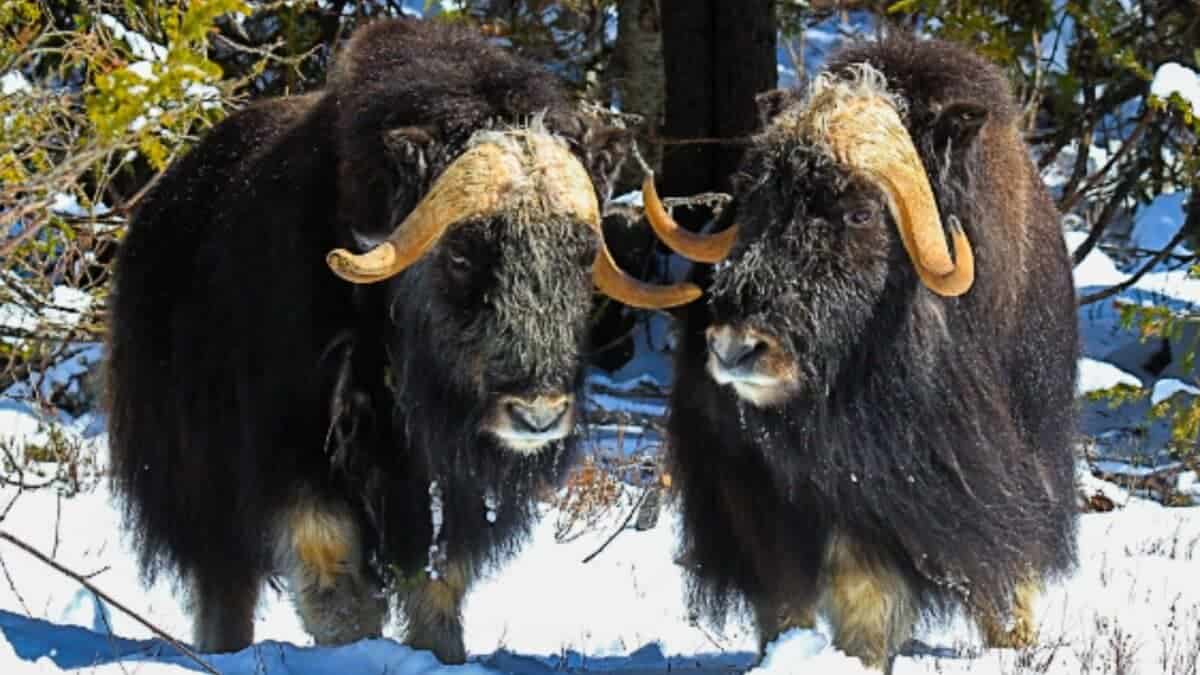
The muskox’s coat undergoes remarkable seasonal changes to match the extreme variations in Arctic conditions. During the brief summer months, muskoxen shed their qiviut in large clumps, often rubbing against rocks and vegetation to hasten the process. This natural shedding helps prevent overheating during the warmer months when temperatures can occasionally rise above 50°F. The timing of this molt is critical—too early, and they risk exposure to late spring cold snaps; too late, and they may suffer heat stress.
As autumn approaches, new qiviut begins growing rapidly, preparing the animals for the coming winter. By the time the polar night descends, bringing months of darkness and extreme cold, muskoxen have regrown their full thermal protection. This new coat is at its thickest and most insulative during the deepest winter months (January through March), precisely when temperatures reach their lowest points. The seasonal timing of this coat cycle represents a finely tuned evolutionary adaptation to the Arctic’s extreme climate patterns.
Arctic Survival Strategy: Beyond the Coat
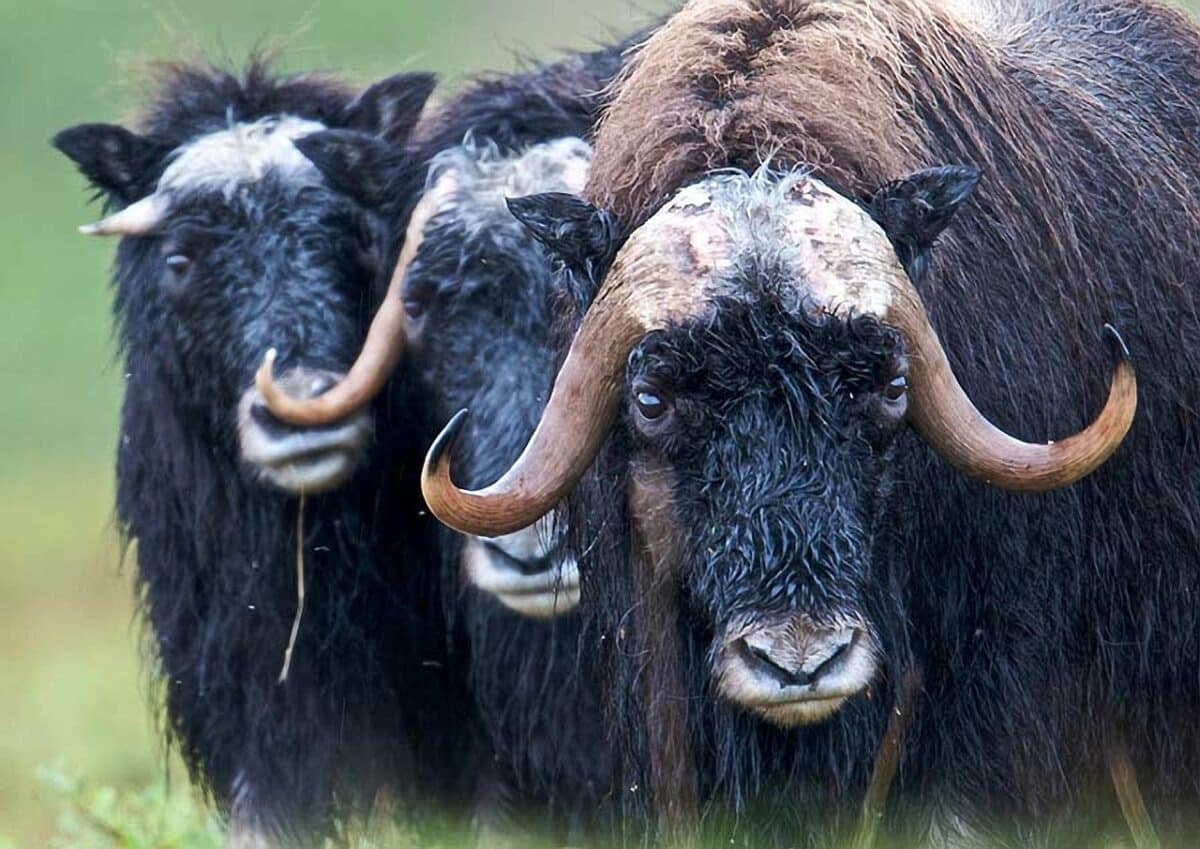
While their remarkable coat is their primary defense against the cold, muskoxen employ additional strategies to survive Arctic winters. Their compact body shape minimizes surface area relative to volume, reducing heat loss—a perfect example of Bergmann’s rule, which states that animals in colder climates tend to be larger to conserve heat. Their short legs, ears, and tail further reduce heat loss from extremities. Beneath their insulating coat, muskoxen develop a thick layer of fat during the summer and fall that provides both insulation and energy reserves.
Perhaps most impressively, muskoxen have specialized blood circulation that helps conserve body heat. Through a process called countercurrent heat exchange, warm arterial blood flowing to their extremities passes close to cold venous blood returning from those areas. This warms the returning blood before it reaches the body core while cooling the outgoing blood, reducing heat loss at the extremities. Combined with their extraordinary coat, these adaptations allow muskoxen to maintain a normal body temperature of about 100°F even when ambient temperatures drop below -40°F.
The Human Connection: Indigenous Knowledge and Use

For thousands of years, Arctic Indigenous peoples have recognized the exceptional qualities of qiviut. The Inuit, Yupik, and other northern peoples have traditionally collected naturally shed qiviut from the tundra during spring, never needing to harm the animals to obtain this valuable resource. Using hand-spinning techniques passed down through generations, they transform the raw fibers into thread and yarn for creating garments of unparalleled warmth and lightness. A traditional qiviut neck warmer weighing just a few ounces can replace a bulky wool scarf while providing superior protection from the cold.
Indigenous knowledge about qiviut extends beyond its practical applications to cultural significance. In many northern cultures, muskoxen symbolize resilience and survival, qualities reflected in traditional stories and art. The sustainable harvesting and use of qiviut represents a model of human-animal relationships based on respect and conservation. Today, many Indigenous communities in Alaska, Canada, and Greenland maintain cooperatives that ethically source qiviut to create fine garments, supporting both cultural preservation and economic development.
Modern Applications: Qiviut in Today’s World

In recent decades, qiviut has gained recognition beyond the Arctic as one of the world’s most luxurious and functional natural fibers. Unlike sheep’s wool, qiviut contains no lanolin and is therefore naturally hypoallergenic, making it suitable for people with wool sensitivities. It’s also remarkably lightweight—a full-sized qiviut scarf can weigh less than two ounces yet provide exceptional warmth. These qualities have made qiviut highly sought-after for premium outdoor clothing and accessories.
Commercial qiviut production now exists in several forms. Some operations collect naturally shed qiviut from wild muskoxen in protected areas, while others maintain small domestic herds specifically for fiber production. The University of Alaska once ran an experimental muskox farm to study sustainable qiviut harvesting. Today, the Oomingmak Musk Ox Producers’ Co-operative, owned by approximately 250 Native Alaskan women from remote villages, stands as a model of sustainable use. Their hand-knit qiviut garments are renowned worldwide for their exceptional quality and cultural significance.
Conservation Challenges: Protecting the Muskox

Despite their remarkable adaptations, muskoxen face significant conservation challenges. By the early 20th century, overhunting had eliminated muskoxen from much of their historical range, with Alaska’s population completely wiped out. Reintroduction efforts beginning in the 1930s have successfully reestablished populations in Alaska and parts of Russia, while natural populations persisted in Canada and Greenland. Today, the global population stands at approximately 80,000-125,000 individuals—a significant recovery, but still vulnerable.
Climate change presents perhaps the greatest threat to muskoxen today. As the Arctic warms at more than twice the global average rate, muskoxen face changing precipitation patterns that can create ice layers over vegetation, making food inaccessible. Warmer temperatures also favor the northward expansion of parasites and diseases to which muskoxen have limited immunity. Additionally, unpredictable weather can interfere with the seasonal timing of their coat cycles, potentially leaving them vulnerable to temperature extremes at the wrong times.
Muskoxen Social Structure: The Defensive Circle
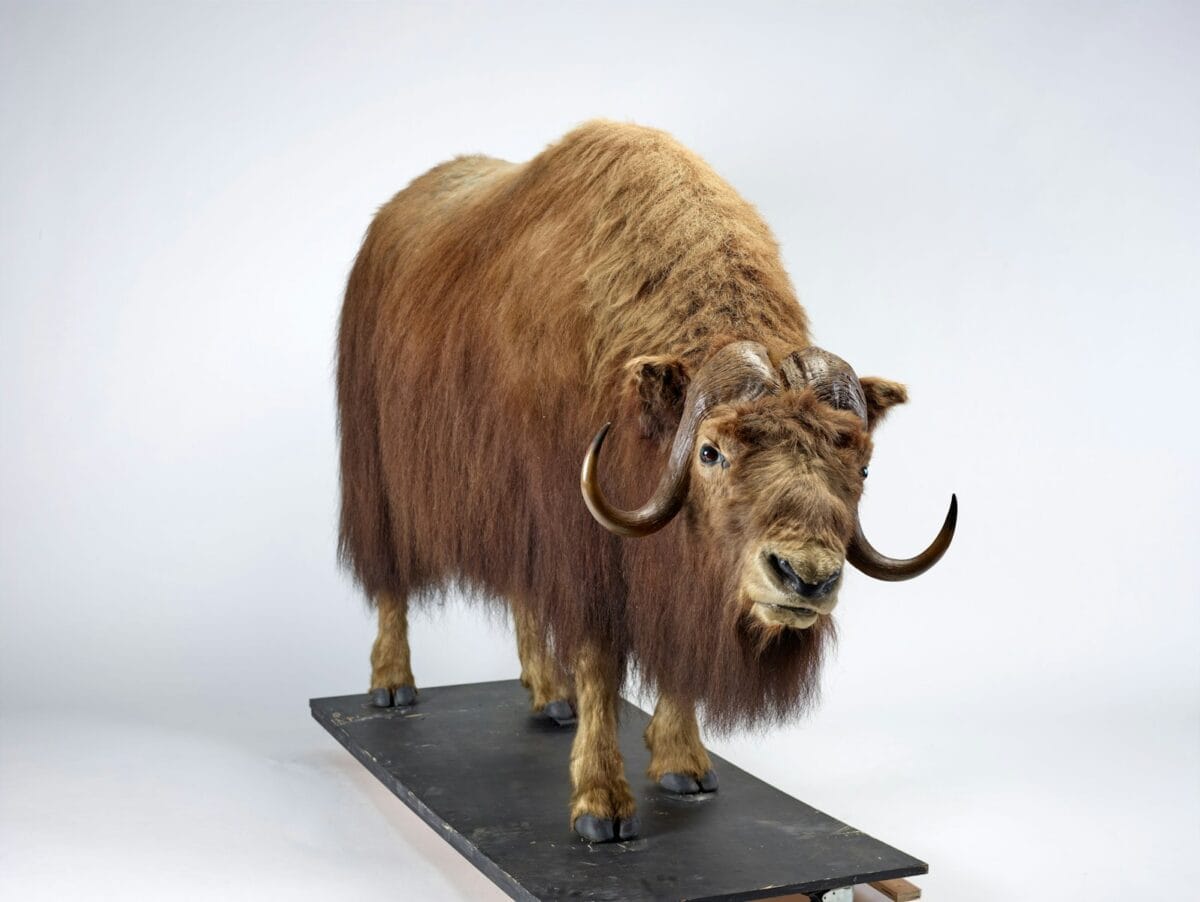
The muskox’s remarkable coat isn’t its only adaptation for Arctic survival—their unique social behavior also plays a crucial role. Muskoxen typically live in mixed-sex herds of 10-20 individuals led by a dominant bull. This social structure provides protection against their primary predator, the Arctic wolf. When threatened, muskoxen display one of the animal kingdom’s most distinctive defensive formations: the circle. Adults form a tight outward-facing ring with their formidable horns presented to predators, while calves remain safely in the center of the formation.
This defensive strategy, combined with their imposing size and appearance, makes adult muskoxen nearly impervious to predation under normal circumstances. Their thick skull and powerful neck muscles allow them to engage in spectacular head-butting contests during mating season, with males charging each other at speeds up to 30 mph. The thunderous crack of these collisions can be heard from considerable distances across the tundra. These social behaviors, together with their extraordinary coat, have allowed muskoxen to survive in an environment where few large mammals can persist.
Comparing Nature’s Insulation: How Qiviut Stacks Up
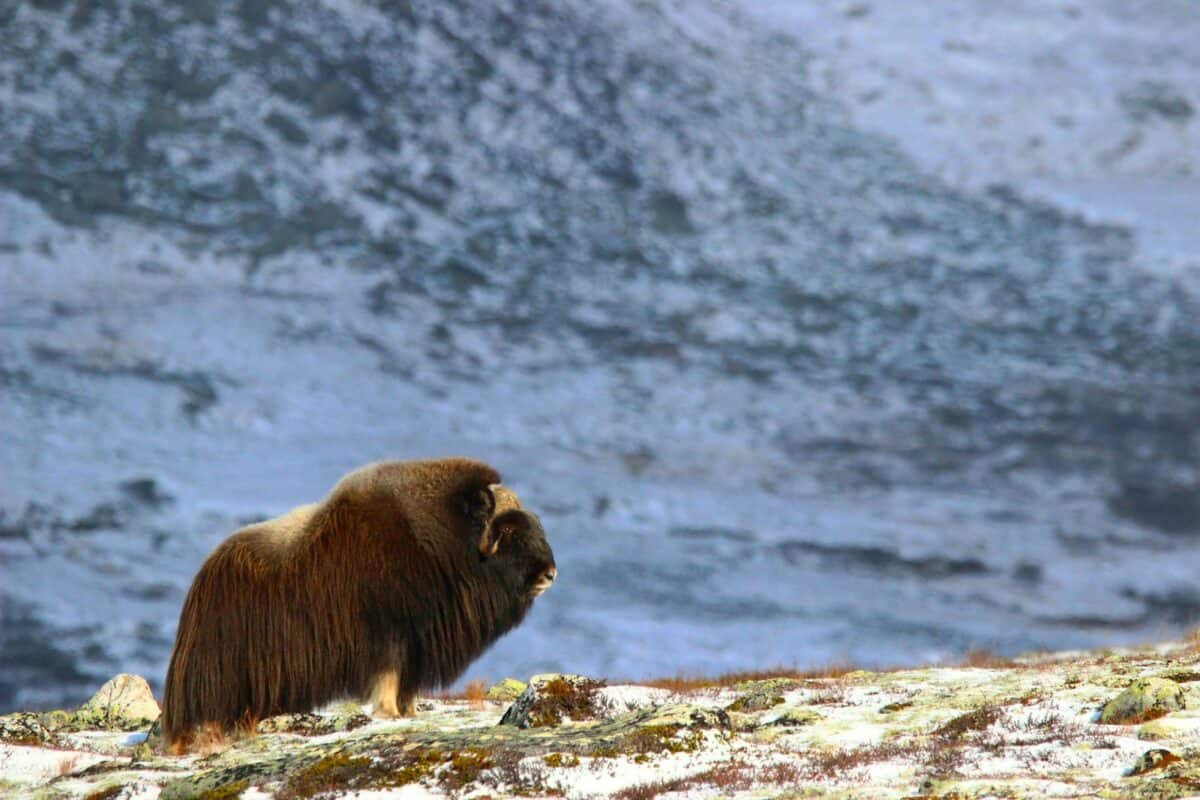
To appreciate just how exceptional muskox insulation is, it helps to compare qiviut with other natural materials. Polar bear fur, often cited for its insulative properties, actually works differently—the hollow hairs conduct UV radiation to the black skin beneath, where it converts to heat. Arctic fox fur provides excellent insulation but requires more bulk for equivalent warmth. Caribou fur, with its hollow hairs, offers impressive insulation for its weight but still doesn’t match the thermal efficiency of qiviut. Emperor penguin feathers, perhaps the closest competitor, provide remarkable insulation but serve a different environment (water and air rather than exclusively air).
In terms of measurable properties, qiviut stands apart. Its thermal conductivity (how readily it allows heat to pass through) is extraordinarily low. Laboratory testing shows that qiviut provides approximately 8-10 times more insulation per weight than sheep’s wool. When comparing commercial fibers, qiviut offers about 30% more warmth than cashmere while being notably lighter and stronger. It’s also remarkably resistant to stretching or shrinking when wet—another crucial adaptation for an Arctic environment where moisture management can mean the difference between life and death.
The Future of the Arctic’s Warmest Inhabitant
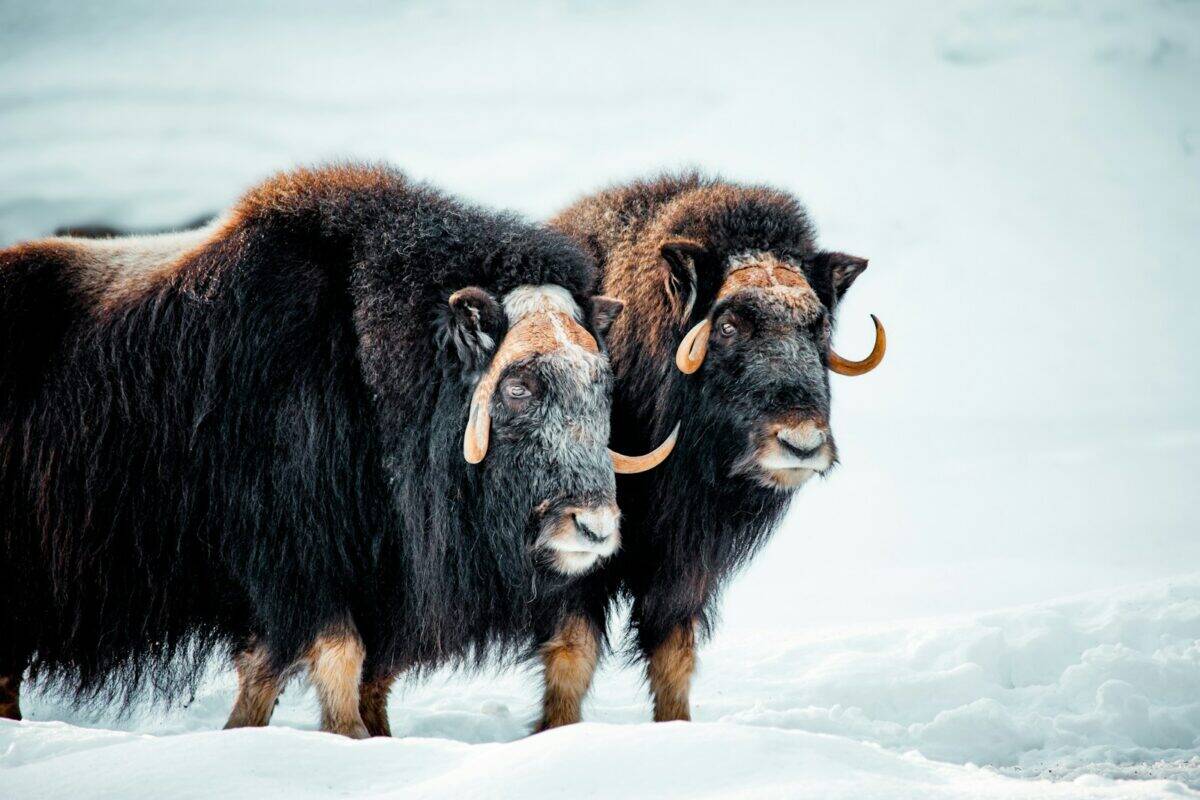
The muskox stands as a testament to the power of evolutionary adaptation in Earth’s most extreme environments. As we face a future of rapid environmental change, particularly in the Arctic, the fate of this living Ice Age relic remains uncertain. Conservation efforts focus on protecting critical habitat, managing human interactions, and monitoring population health. Research continues into the remarkable properties of qiviut, both to understand its extraordinary insulative capabilities and to develop sustainable harvesting methods that benefit both the animals and indigenous communities.
The muskox’s remarkable adaptations—particularly its unparalleled coat—offer valuable lessons for human innovation. Biomimicry researchers study qiviut’s structure to develop new insulation technologies that could revolutionize cold-weather gear while using less material. Meanwhile, traditional knowledge about sustainable qiviut harvesting provides models for responsible resource use. By protecting these magnificent creatures and learning from their extraordinary adaptations, we honor one of nature’s most impressive feats of engineering—the warmest natural coat in the animal kingdom.
Conclusion: A Marvel of Natural Engineering

The Arctic muskox stands as one of nature’s most remarkable success stories, having survived in Earth’s most challenging environment for thousands of years largely thanks to its extraordinary coat. Qiviut, with its unparalleled insulation properties, represents the pinnacle of natural fiber evolution—a material so effective that it allows its bearers to thrive in conditions that would be lethal to most mammals. This remarkable adaptation didn’t develop overnight but was refined through countless generations facing the extreme selective pressures of Arctic winters.
As we continue to study the muskox and its superlative coat, we gain not only scientific knowledge but also deeper appreciation for the ingenuity of natural selection. The muskox reminds us that sometimes the most impressive technologies aren’t created in laboratories but evolved over millennia in response to environmental challenges. From indigenous garments to modern high-performance outerwear, humans continue to learn from and be inspired by this extraordinary Arctic survivor.
The story of the muskox and its unrivaled coat is ultimately a story of resilience—a quality we increasingly value in our changing world. By protecting these magnificent creatures and the fragile Arctic ecosystems they inhabit, we preserve not just a living piece of Ice Age heritage but also one of nature’s most impressive engineering achievements: the warmest natural coat in the animal kingdom.
- How Penguins Take Turns at Sea and Nest to Raise Chicks - August 9, 2025
- Dolphin Brains Compare to Those of Apes and Humans - August 9, 2025
- 14 Cutting-Edge Biotech Innovations That Will Shape the Future - August 9, 2025

